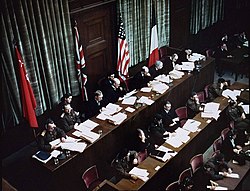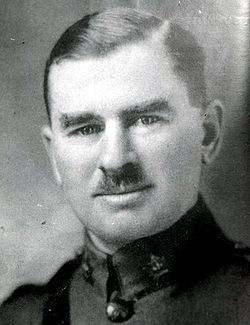Wikipedia:WikiProject Military history/News/September 2023/Articles
|
New featured articles |


- Nuremberg trials (Buidhe)
- Continuing Buidhe's series of articles related to the Holocaust, the Nuremberg trials took place between November 1945 and October 1946, when the Allies of World War II put 21 of the most important surviving leaders of Nazi Germany in the dock for planning and waging aggressive war, for war crimes, and for crimes against humanity. Nuremberg was chosen as the venue for its symbolism as the site of the infamous Nazi rallies. Controversial then and since for supposedly dispensing victor's justice, the trials' innovation of holding individuals responsible for violations of international law has also been described as "the true beginning of international criminal law".
- Radoje Pajović (Peacemaker67)
- This article covers the most prominent historian of the World War II period in Montenegro, and one of the most prominent Montenegrin historians overall. He did his Ph.D on the World War II Chetnik Federalist movement in Montenegro, and was on the staff of what is now the Faculty of Philosophy at the University of Montenegro for forty years. He wrote or co-wrote twelve books, and railed against historical revisionism of the World War II period in Montenegro and in the former Yugoslavia more generally. He died in 2019.
- Air Board (Australia) (Ian Rose)
- The latest in Ian's series on the organisational history of the Royal Australian Air Force, this article concerns the body that ran the RAAF between 1921 and 1976, and discusses its origins, purpose, changes in composition, major or representative decisions, and dissolution, as well as highlighting those times (inevitably during international conflict) when it did not exercise complete control of its assets. In his nomination statement, Ian noted that there appeared to be no comparable detailed summary of this important body currently available.
- Frank McGee (ice hockey) (Kaiser matias)
- According to KM's nomination statement, "Frank McGee was once one of the biggest names in hockey, but today is known mainly for three things: playing with one eye; scoring 14 goals in one game; and dying in the First World War." Having apparently tricked Canadian military examiners into believing he had vision in both eyes, he saw action on the Western Front, including the Somme, before his death from artillery fire on 16 September 1916. He was mentioned in despatches for actions earlier the same day.
New featured pictures |
-
The Monteleone Chariot, Met Museum photograph
New A-class articles |

- American logistics in the Western Allied invasion of Germany (Hawkeye7)
- The latest in Hawkeye7's series of articles on military logistics covers the work that went into supplying the US Army's contribution to the invasion of Germany during 1944-45. The US Army suffered from shortages of manpower, but generally enjoyed ample supplies of food, fuel, ammunition and other items. Supply units largely managed to keep up with the very rapid pace of the advance across Germany, despite geographic barriers and some tough fighting.
- Battle of Cane Hill (Hog Farm)
- The Battle of Cane Hill was fought between Federal and Confederate forces during the American Civil War on November 28, 1862, in northwestern Arkansas, near the town of Cane Hill. Federal units had entered northwestern Arkansas, and attacked a smaller Confederate force. The resulting battle was inclusive, and resulted in few casualties on both sides.
|



